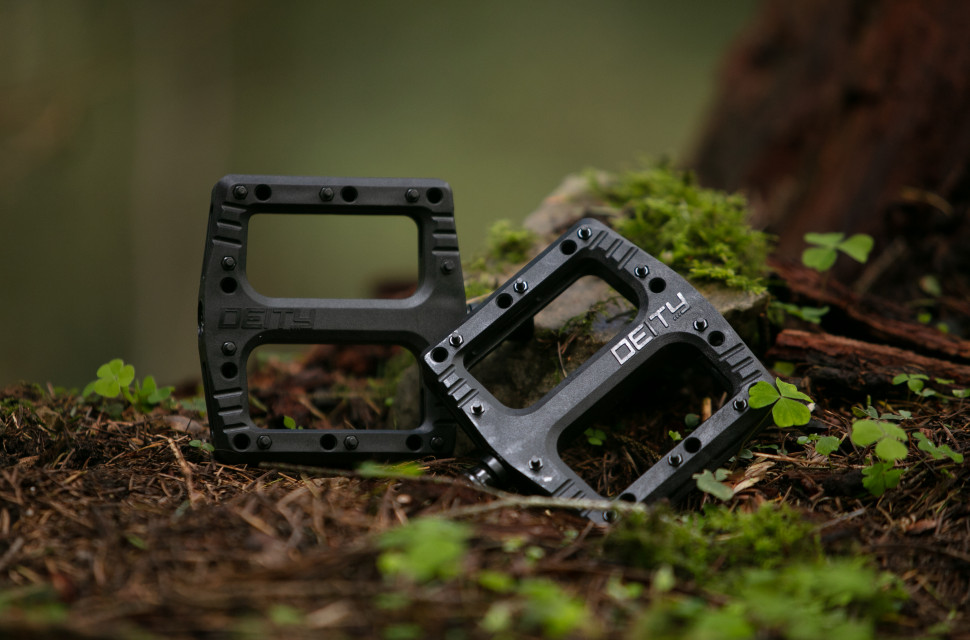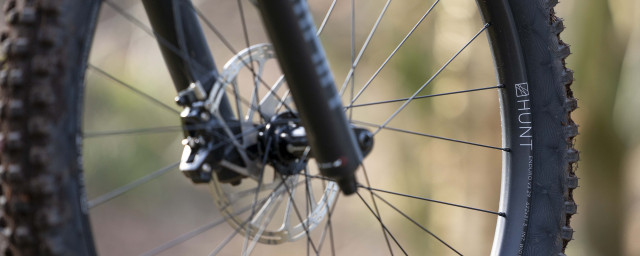Are flat pedals worth it?

There is a saying in mountain biking that ‘flat pedals win medals’. And it is quite an ironic phrase because you rarely, if ever, see flat pedal shoes on the podium at a mountain bike race. But for one rider: Sam Hill.
- Best mountain bike pedals - the best options from XC to Enduro
- Wolf Tooth Waveform flat pedal review
- Best mountain bike shoes 2023 - top-rated flat and clipless kicks
The mercurial Australian won downhill mountain biking’s UCI World Championships in 2006 and 2007 on flat pedals. But his most remarkable achievement was dominating enduro mtb racing, which features a lot more pedalling than downhill. Hill was Enduro World Series champion for three consecutive years, from 2017 to 2019.
Hill remains, to many, the most successful flat pedal multi-discipline mountain biker of all time and most newbie riders will be well served, emulating his pedal choice.
One question, however, remains: are flat pedals the best mountain bike pedals?
Why should I ride flats?
Many mountain bikers ride clipless pedals that use a cleat bolted into your riding shoes, that clips into a spring-loaded mechanism on the pedal. But if loads of mountain bikers ride clipless, should all riders start clipped in? The answer is that flat pedals didn’t only win medals for Sam Hill, but they have also been the better foundational mountain biking experience for most newbie riders.
Clipless pedals are tricky to master when mountain biking is unfamiliar. You’ve got suspension bobbing, powerful brakes, and lumpy off-road terrain to master: with its rocks, roots and switchback corners. Mountain bike controls and trail features can be daunting when you are starting out.
When newbie riders explore and learn to ride, it’s only natural that many trail features will prove too intimating. That’s one of the reasons why flat pedals are so helpful for newbie riders as they allow the rider to stop and get a foot down easily, avoiding that horrible slow-motion fall to the side.
Acquiring mountain biking skills is about experience and confidence. If you are afraid or nervous about being unable to get a foot down to balance, you’ll never want to attempt more challenging trails or features. And that means your progress as a rider will stall.
Flat pedals free riders from the anxiety of stalling and tipping over. These are the most avoidable crashes for newbies but can often be the worst. Riders can put a hand out to brace their fall and suffer finger damage or a broken wrist. With flat pedals, you always have the authority of balance by getting a foot down on terrain immediately, without the delay of unclipping.
Flat pedals develop ‘correct’ technique
Beyond the confidence of being able to brace a potential slow-speed lateral fall when your momentum stalls and the bike unbalances, flat pedals teach much better riding habits.
Clipless pedals are great for experienced riders. However, they can support poor riding habits, with riders' pulling’ on the pedals, instead of pressuring them in technical terrain or when attempting to jump.
There is a valid school of thought in mountain biking that proper jumping technique cannot be acquired with clipless pedals. It’s why dirt jumpers and extreme freeride mountain bikers only ride flat pedals.
Flat pedals force you to ‘push’ into a transition, pre-loading the bike before projecting into the air. Unskilled riders on clipless pedals tend to inadvertently ‘pull’ during a jump, creating an awkward posture throughout the sequence of a jump. This ‘pulling’ technique with clipless pedals is often the cause of riders crashing when attempting to jump.
Cornering confidence
Switchback corners are another example where riders suffer from anxiety and confidence issues due to clipless pedals. You’ll notice newbie riders who are clipped-in often stalling mid-corner because they are afraid of falling clipped-in and being unable to get a foot down.
Flat pedals allow newbie riders to focus on better technique by looking through the corner to adjust body position and confidently lean the bike.
A flat pedal's structure and contact surface offer advantages in developing techniques, for beginners, compared to clipless pedals. Riders can find a much wider range of foot position adjustments on flat pedals than on clipless. With a clipless pedal that doesn't have a platform or large body, the contact point is tiny (it's just the cleat), which also mutes ‘trail feedback’ through the pedals.
With a flat pedal, the structure is much larger, and all of it is in contact with the shoe. Riders can spread the load of their body weight more naturally when standing on the pedals. This develops a more intuitive understanding of the weight shift dynamics between rider and bike, which is crucial when learning to load and unload the suspension to perfect the cornering and jumping technique.
Honing pedalling technique
Although most coaches and gifted riders will champion flat pedals as the ideal way of acquiring technical riding skills, like jumping and rolling severe rock gardens, there is something to be said for efficiency, too. Although clipless pedals are more efficient – it’s why cross-country mountain bikers and roadies ride them – they can prevent newbies from understanding the ‘full circle’ principle when pedalling.
Perfect pedalling technique is an art. Even the pros will continuously evaluate their pedal stroke for improvement. Because clipless pedals allow riders to ‘pull’, it masks incorrect technique through a pedal stroke's ‘full circle’ of biomechanical motion. With flat pedals, riders learn a more natural stroke without accidentally falling into the habit of ‘pulling’ on the upstroke.
After serving months of pedalling apprenticeship with flat pedals, a newbie rider graduating with clipless pedals should have a pedal stroke technique with good efficiency. And less knee injury risk in the long term.
Affordable flat pedal options exist
Flat pedals have a purpose, not just for daring riders who hit the biggest jumps. Experienced mountain bikers, who ride clipless, will occasionally revert to flats for a month to reference correct technique and ‘unlearn’ some of those bad habits which can acquire when riding clipped-in.
There is a convincing argument that newbie mountain bikers should never start their riding journey clipped into clipless pedals. Flat pedals are safer, generate greater confidence, avoid preventable injury, and assist riders in gaining a lot of superior technique.
For many years, the flat pedal market was biased toward elite freeride and dirt jump riders, with limited metal pedal choices and a narrow selection of shoes. The market for quality and affordable flat pedals has grown, and more flat pedal shoes are available now, too. That means a set of good quality flat pedals can be picked up for under £40, and a decent pair of shoes can easily be bought for less than £100.
If you are starting that mountain bike journey, don’t constrain your trajectory of development or potential for enjoyment with clipless pedals. They are something you can graduate to over time.













